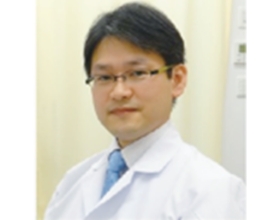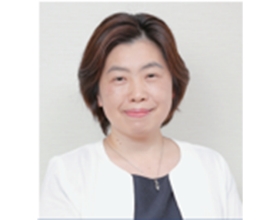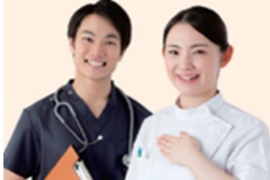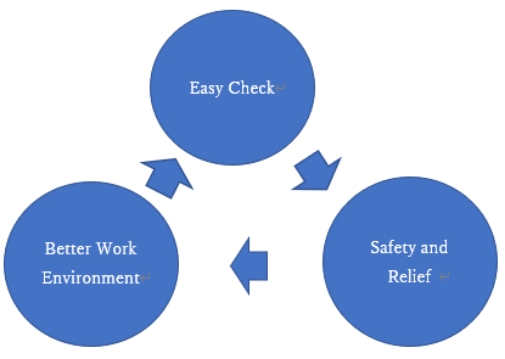- HOME
- Information
- Anti-cancer Drugs Exposure Evaluation Services
Anti-cancer Drugs Exposure Evaluation Services
All healthcare personnel and other workers at facilities where anti-cancer drugs are handled are likely
to have a risk to be occupationally exposed to anti-cancer drugs. Why?
This Newsletter features
“Necessities for Anti-cancer Drug Exposure Evaluation”.
Background of Anti-cancer Drug Exposure Evaluation
1) Likeliness to be occupationally exposed to anti-cancer drugs
Anti-cancer drugs are necessities for patients who have a chemical treatment for cancer. Although anti-cancer drugs have anticancer effects, most of them also have side effects such as mutagenicity, carcinogenicity or teratogenicity. Because healthcare personnel handle routinely these drugs, they have a potential risk to be exposed to anti-cancer drugs for a long time.
・Mutagenicity is a term used to broadly describe the property of chemical agents or drug substances to give abnormalities to DNA or chromosomes and induce genetic mutation. It is also known as a factor to induce cell neoplastic transformation.
・Carcinogenicity is a property to change normal cells to cancer cells. Quite many kinds of materials have carcinogenicity.
・Teratogenicity is ability of a drug to cause fetal deformities when taken by a pregnant woman.
2) Category and method of anti-cancer drug exposure evaluation
Exposure evaluation are categorized as “Environmental Monitoring” and “Biological Monitoring” (see table 1.) You can use any sample collecting method depending on your purpose of exposure evaluation.
3) Potential opportunities to take in anti-cancer drugs
For healthcare personnel, understanding how anti-cancer drugs are taken in their body is important. The following four routes are considered for them to take in anti-cancer drugs.
① Absorption: directly taking anti-cancer drugs on the skin or mucous membrane in the body,
② Injection: erroneously sticking skin with a needle when compounding anti-cancer drugs or blending
components,
③ Inhalation: inhaling aerosol generated by anti-cancer drugs, and
④ Oral ingestion: indirectly ingesting anti-cancer drugs when having food or drink using hands
contaminated with them.
Examples of potential opportunities of exposure to hazardous drugs are written as follows in
“Guidelines
of Preventing Occupational Exposure in Cancer Chemotherapy Drugs” * (hereinafter the Guidelines).
*Japanese Society of Cancer Nursing: Guidelines of Preventing Occupational Exposure in Cancer Chemotherapy
Drugs, P31, Chapter 2, Background Knowledge and Recommendations・Commentary
- When piercing a vial with a needle or withdrawing it from the vial.
- When moving an anti-cancer drug using a needle or a syringe.
- When cutting an ampoule containing an anti-cancer drug.
- When expelling air from a syringe containing an anti-cancer drug.
- When administrating an anti-cancer drug to a patient.
- When piercing an infusion bag with a needle or changing a tube.
- When leakage occurs in an infusion line or at a connection.
- When disposing of hazardous drugs or waste.
- When handling body fluid (e.g., vomit, blood or feces) of the patient who had the medical treatment within 48 hours.
- When cleaning areas contaminated by anti-cancer drugs.
4) Significance of anti-cancer drug monitoring
Doctors who took part in the creation of the Guidelines emphasize the significance of anti-cancer drug monitoring. The Guidelines states that exposure to the hazardous drugs may be diminished if the sources of the exposure are identified by environmental monitoring and appropriately dealt with. The environmental monitoring can be a useful method to decrease the hazardousness of the anti-cancer drugs to personnel. As there are no clear data regarding the clinical impact of contaminated environment on personnel or method of environmental monitoring, periodical environment monitoring is recommended.
The following Statements were made by doctors who took part in the creation of the Guidelines.

“You need to convert risks into numerals to evaluate invisible risks and consider how to mitigate them. To know how much your work environment is actually contaminated will enable you to investigate the cause of the contamination, develop a method to lessen the contamination and its effectiveness, and also let your personnel be more aware of the importance to mitigate the contamination risk. I recommend you commence environment monitoring not to attain “Zero Risk” but to appropriately control risks.”
YASUI Hisateru, Ph.D.
Director of Medical Oncology
Kobe City Medical Center General Hospital

“To know how much the work environment of your facilities is contaminated by anti-cancer drugs through investigational monitoring will be the first approach to mitigate the exposure risks. The monitoring result will let you know the effectiveness of your current countermeasure against exposure to the anti-cancer drugs. What is important is to discuss necessary improvements based on the result. Nurses often move between jobs. Training them about the safe handling of anti-cancer drugs is not enough. It is important to periodically and continually confirm by environmental monitoring the countermeasure remains effective.”
KAZUE Hirai, RN., Ph.D.
Professor
Tokyo Medical University, Faculty of Medicine, School of Nursing
Shionogi Pharma’s Anti-cancer Drug Exposure Evaluation Services
1) History
Our Anti-cancer Drug Exposure Evaluation Services were launched based on various comments from hospital
doctors. Based on them, we considered how we could contribute to healthcare workers using our analytical
technology for drugs and developed a useful sampling sheet method to monitor work environment in an easy
and safe manner. In September 2011, Shionogi Analytical Center, our former company, earnestly started
exposure evaluation services using the sampling sheet method. A sampling sheet is placed on any location
for any period to collect anti-cancer drugs which fall on its surface. As anti-cancer drugs collected on
the sheet are directly quantified without wiping, there is no need to mind recovery rate.
So far, our sampling sheets have been used at 138 base hospitals for cancer treatment in Japan.
Table 2 shows the examples of anti-cancer drugs expected to be analyzed.
Table 2. Examples of anti-cancer drugs
| Sampling method | Analytical method | Anti-cancer drugs |
|---|---|---|
| Sampling sheet method | LC-MS/MS | ifosfamide, cyclophosphamide, gemcitabine, fluorouracil, epirubicin, paclitaxel, oxaliplatin, docetaxel, doxorubicin, thiotepa, etoposide |
| ICP-MS | cisplatin, carboplatin, oxaliplatin | |
| LC-UV | 6-mercaptopurine, vindesine, doxorubicin, cytarabine |
|
| Linearity (5 concentrations). | LC-MS/MS | cyclophosphamide |
| ICP-MS | cisplatin, carboplatin, oxaliplatin |
*As for wipe testing and extraction method and other anti-cancer drugs, please contact us.
2) Shionogi Pharma’s Exposure Evaluation Services
US Oncology Nursing Society published in 2011 the second version of “Safe Handling of Hazardous Drugs.” Safe handling of hazardous drugs is a must in EU and US. In Japan “Occupational Safety and Health Guideline for health and safety of nurses” was published by Japanese Nursing Association in 2018. This guideline states “Consciousness to industrial health and safety has been recently improving In Japan and secure implementation of methods to prevent exposure to hazardous drugs is expected to maintain healthcare personnel’s health by making work environment safer.” Table 3 lists our services to evaluate your current working environment, when appropriate, using placebo instead of actual anti-cancer drugs.
Table 3. Shionogi Pharma’s services
- ➀ To investigate the cause of contamination
- ➁ To propose countermeasures
- ➂ To evaluate the effectiveness of the countermeasures
- ➃ To optimize the technique and procedure
- ➄ To prepare training material for the personnel
- ➅ To improve the personnel’s consciousness against the countermeasures
- ➆ To control the environment by periodical monitoring (see Fig 1)
Cost and Procedure for Exposure Investigation

- What is contaminated?
- How effective is the countermeasure?
- Is clean environment maintained?
- We cannot provide our control data when requested from outside institution.

Got relieved!
- Contaminated surfaces were found.
- Effectiveness of countermeasures were visualized.
- We could see our environment kept clean.
- We could use our control data when requested from outside institution.
Fig 1. Periodical monitoring turns your anxiety to confidence
3) Tendency of Contamination
Contamination levels by anti-cancer drugs were quite different depending on the use of medical closed system equipment or cleanliness of workplaces. Our evaluation results obtained from outpatient chemotherapy rooms and hospital wards between 2013 and 2019 show that gloves worn by nurses are most highly contaminated followed by toilets. The toilets were proven to be contaminated by the splash of patients’ urine.
Summary
Exposure evaluation to anti-cancer drugs will enable you to know the current contamination of your work
environment and implement appropriate measures against needed locations to lessen the contamination level
of your work environment. We sometimes hear from healthcare personnel that exposure evaluation to
anti-cancer drugs has led to the mitigation of the occupational contamination. Periodical monitoring has
enabled them to evaluate the effectiveness of their approaches against the contaminated environment and
keep them under control.
When sole use of medical closed system equipment is not effective enough for outpatient chemotherapy rooms
or toilets, you can remove contaminants by our anti-cancer drug decomposition solution.
Shionogi Pharma will continue to support healthcare personnel through monitoring of their workplaces where
anti-cancer drugs are handled so that they can work for medical treatment without any concern about their
work environment.

Topics
- 2022/09/09
- TopicsIntroduction to High-Sensitivity Analysis Techniques for Elemental Impurities ~ Providing solutions for ICH Q3D
- Introduction to High-Sensitivity Analysis Techniques for Elemental Impurities ~ Providing solutions for ICH Q3D
- 2022/09/09
- TopicsA novel freeze-drying method using controlled freeze-drying technology
- A novel freeze-drying method using controlled freeze-drying technology
- 2022/09/09
- TopicsAnti-cancer Drugs Exposure Evaluation Services
- Anti-cancer Drugs Exposure Evaluation Services
- 2022/09/09
- TopicsManufacturing facilities for highly potent APIs
- Manufacturing facilities for highly potent APIs
- 2022/09/09
- TopicsIntroduction to Technologies for Continuous Manufacturing of Drug Proucts
- Introduction to High-Sensitivity Analysis Techniques for Elemental Impurities ~ Providing solutions for ICH Q3D
